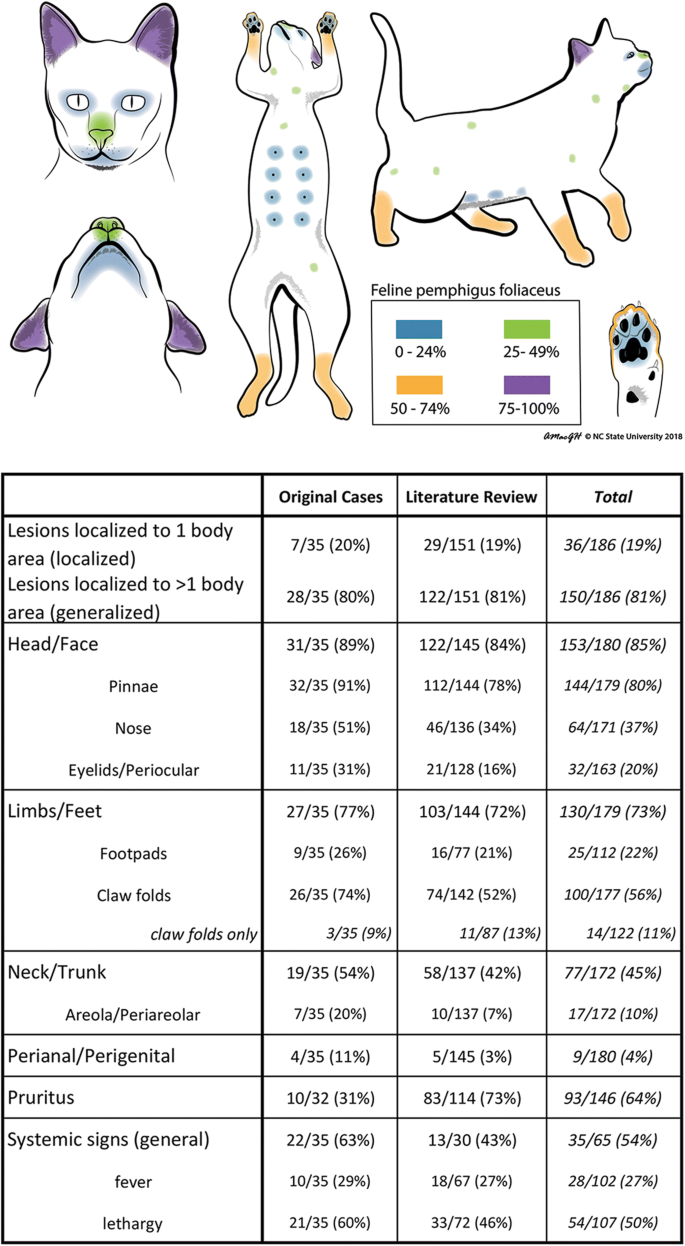
Cats can acquire Toxoplasma by eating infected rodents birds or anything contaminated with feces from another infected animal. In this stage autoimmune diseases may develop.

Scientists arent sure exactly how these infections cause autoimmune disease and its likely that a few different mechanisms are.
Can cats get autoimmune diseases. Cats that are allowed to roam outdoors male cats and older cats are more likely to become infected. This viral infection attacks the immune system leading to infections of the gums mouth digestive tract urinary tract and skin. Low red and white blood cell counts certain cancers or neurologic disease may also be seen.
Shortly after becoming infected cats may have a fever and enlargement of the lymph nodes glands. However these signs go away and the cat. Most people infected with Toxoplasma however show no overt signs of disease.
Cats can acquire Toxoplasma by eating infected rodents birds or anything contaminated with feces from another infected animal. An infected cat can shed the parasite in its feces for up to two weeks. Once shed in the feces the parasite must mature for one to five days before it becomes capable of causing infection.
Immune mediated or autoimmune skin diseases other than Pemphigus foliaceus are uncommon to rare in the cat. PEMPHIGUS FOLIACEUS PF PF is the most common autoimmune skin disease of cats and is generally more common in middle aged to older animals. There is no age breed or gender predisposition.
The pathogenesis of the pemphigus group of diseases involves the induction of. Infected outdoor cats fighting with other cats can transmit the disease through bites and scratches. Healthy cats over three months of age and vaccinated for FeLV are highly unlikely to contract the virus from another cat.
Cats can be infected and show no signs. Loss of appetite and weight loss. Pale or inflamed gums.
However indoor cats and only cats can get sick too. The good news about cat illnesses is that most are easily preventable. The bad news is that once your cat contracts an illness it can be very difficult to treat.
Its also important to keep in mind that even minor ailments can suggest major health problems. When an autoimmune disorder results in skin crusting and ulceration the condition is referred to as pemphigus. The cats body is essentially reacting to itself producing antibodies that attack the healthy tissue and cells.
Not limited to the paws pemphigus can affect a cats gums. There are three types. Foliaceus erythematosus and vulgaris.
The diseases discussed in this article do not constitute the entire spectrum of autoimmune disease in these species. They are the common and better-described diseases of dogs and cats that have a well-documented autoimmune etiology. There are myriad autoimmune diseases that affect humans.
Similar diseases yet unrecognized in companion animals likely will be characterized in the future. Disorders resulting from an underactive immune system called immunodeficiencies put animals at an increased risk for infections. Alternatively an overactive immune system can attack parts of its own body that it misidentifies as foreign causing what is known as an autoimmune disorder.
Cats can get infections such as toxoplasmosis by eating wild animals. Do not let your pet drink from the toilet. Several infections can be spread this way.
Keep your pets nails short. Bone Marrow Reveals Autoimmune Disease The doctors at the Veterinary Teaching Hospital finally determined the cat was suffering from primary immune-mediated hemolytic anemia. With full transparency Dr.
Hull explained to Lucys family that felines with this disease typically have a poor chance of responding well to the immune suppressant medication that could save their life. Another key factor that can play a role in autoimmune disease is infections. Research has linked a number of viral and bacterial infections to autoimmune disease including Epstein-Barr the virus that causes mono Herpes Simplex 1 and 2 E.
Scientists arent sure exactly how these infections cause autoimmune disease and its likely that a few different mechanisms are. Autoimmune hemolytic anemia AIHA is an immune system disease in which the body attacks and destroys its own red blood cells. In cats with AIHA red blood cells are still being manufactured in the bone marrow but once released into the circulation they have a shorter-than-normal life span.
Salmonella spreads to people through contaminated food eggs and meat or contact with stool of certain animals including cats. Cats can get salmonellosis through eating infected birds. While it usually does not make the cats sick Salmonella infection.
In stage I there is the acute HIV infection and the immune system is intact. In this stage autoimmune diseases may develop. Stage II describes the quiescent period without overt manifestations of AIDS.
However there is a declining CD4 count indicative of some immunosuppression. Autoimmune diseases are not found. During stage III there is immunosuppression with a low CD4 count and the development of AIDS.
CD8 T cells predominant and diseases.